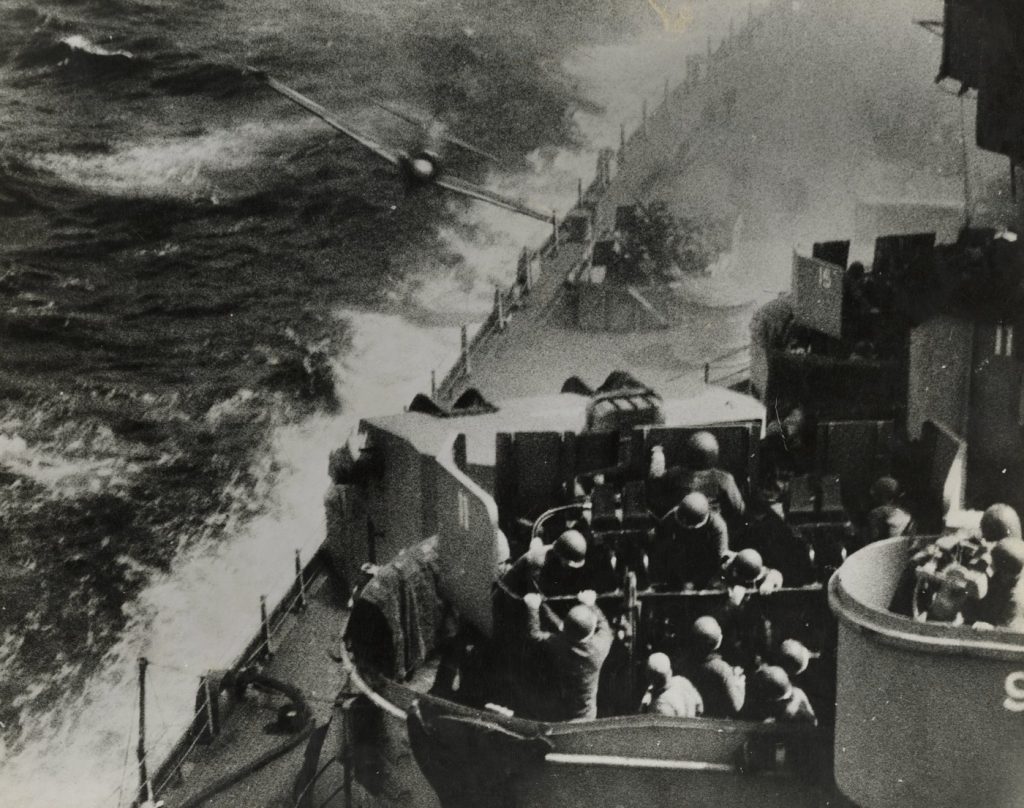On April 11, 1945, a significant yet little-known episode of World War II occurred when a Japanese pilot crashed his Zero fighter plane into the USS Missouri during the Battle of Okinawa. The suicide attack resulted in the immediate death of the pilot, but miraculously, none of the battleship's crew members sustained serious injuries. In a notable act of compassion, the Missouri's captain, William Callaghan, ordered a military burial at sea with full honors for the kamikaze pilot, marking the only known instance of U.S. forces conducting such a ceremony for an enemy combatant.
The USS Missouri, now a museum moored at Pearl Harbor in Hawaii, serves as a poignant reminder of the events that took place during the war. The Missouri is situated close to the USS Arizona, which was sunk during the infamous Japanese bombing in 1941 that propelled the United States into the conflict. Eighty years after the tragic attack, on the anniversary of the incident, Callaghan's grandsons are set to commemorate the event alongside the mayors of Honolulu and the Japanese city of Minamikyushu, the latter being a launch point for many kamikaze pilots.
Michael Carr, CEO of the Battleship Missouri Memorial, emphasized the significance of this story, stating that it illustrates the battleship's transformation into a symbol of peace and reconciliation shortly after its launch. He noted that the act represents a remarkable display of empathy amidst one of World War II's fiercest battles.
Kamikaze pilots, who undertook suicide missions in a desperate attempt to repel advancing U.S. forces, were a product of Japan's dire military situation by late in the war. The Kamikaze Tokko Tai, which translates to Divine Wind Special Attack Corps, was established by the Imperial Navy, while the Imperial Army created its own unit. The missions, often involving hastily constructed aircraft, were called "tokko" in Japan, emphasizing their role as "special attacks." Despite the perception that these pilots were super-patriots volunteering for sacrifice, many were in fact ordinary young men, often drafted university students, who faced immense pressure from their militarized society.
On the day of the attack, the Missouri had already repelled multiple aerial assaults and managed to down one kamikaze plane before being struck by the second. The collision tore off part of the Zero's wing and caused a fire, which the crew successfully extinguished within five minutes. The dent left by the crash is still visible on the battleship today.
Following the incident, Captain Callaghan ordered a burial for the pilot the next morning. The crew fashioned a makeshift "rising sun" flag using red and white cloth and conducted a ceremonial service that included a rifle salute and the playing of taps. The pilot's body was cleaned and wrapped before being committed to the sea, underscoring the humanity of the act, even in the chaos of war. While some crew members initially expressed resentment towards the ceremony, many later came to see its significance as the right thing to do.
The pilot, identified as Setsuo Ishino, was a petty officer second class in a flight training program who had taken off from Kanoya air base as part of a mission with 15 other pilots. Most of his comrades failed to reach their targets. In a poignant last letter to his mother, Ishino expressed his duty to his country, urging her to not grieve but to celebrate his sacrifice. This personal touch highlights the tragic complexity of the kamikaze missions, where pilots were often caught between duty and their personal desires for life.
The remembrance of this event carries particular weight today. In 2016, President Barack Obama referenced the burial during a visit to Pearl Harbor, stressing the importance of recognizing the humanity of those on opposite sides of conflict. The Missouri memorial and the Chiran Peace Museum, which focuses on Japanese kamikaze history, have since partnered, promoting a narrative of peace and reconciliation amidst a shared history of hostility.
As tensions rise in the Asia-Pacific region today, local leaders, including Minamikyushu's mayor Hiroyuki Nuriki, emphasize the need to reflect on the tragedies of war such as that of the kamikaze pilots. Their stories serve as enduring reminders of the impact of war and the importance of fostering peace between former adversaries.










